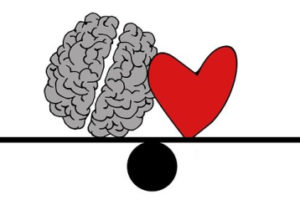What Is Cancer or Critical Illness insurance
If you are diagnosed with cancer, or if you have a heart attack or stroke, you are very likely to survive. But surviving one of these critical illnesses often comes with a huge cost.
That’s why it is so important to consider two types of insurance that will provide you with a single cash payment upon the diagnosis of a covered condition.
Imagine the value of receiving a check for $10,000, for $15,000 or $25,000 at a time when you’ll really need funds to cover costs and to replace lost income while you undergo treatments and take time to recover.
If you are between the ages of 35 and 55, the Association recommends you see how much coverage costs. Consider an amount that will cover your rent or mortgage payment for 6-to-12 months. You can use our Instant Cost Calculator to get an immediate estimate of insurance costs.
Two options worth considering
There are some 60 insurance companies in the United States who offer some form of cancer-only or critical illness insurance. Both options are well worth considering as they can provide real value to you and your family.
Option 1: Cancer-Only Insurance
Just as the name implies, a cancer-only insurance policy pays a lump-sum cash benefit when you are diagnosed by a physician with ‘cancer’. We specifically put the word cancer in quotes because your policy will define what cancers qualify and which do not. Typically, common skin cancers may not be covered.
Why cancer-only insurance? Because this policy covers only one critical illness, it generally costs less than a full critical illness insurance policy that pays benefits for any of between 12 and 16 different illnesses.
When should you consider cancer-only insurance? The risk of being diagnosed with cancer increases with age. The insurance must be in place before that happens.
- Ages 35 to 50 is the ideal time to consider.
- Homeowners with mortgages should consider enough to pay the mortgage while undergoing treatment or recovery.
- Two-income households. When one spouse or partner gets diagnosed, often both take time off of work to support each other.
What’s your real risk? Every day, nearly 5,000 Americans are diagnosed with cancer. No one can predict who or when. The numbers below show that the risk increases as you get older. It also shows that most will survive.
Cancer risk between ages 50-59: 1-in-16 adults will be diagnosed with cancer. (2) Cancer risk between ages 60-69:1-in-8 men and 1-in-10 women will be diagnosed with cancer.
Cancer survival rate: The 5-year overall survival rate is 67%.
Option 2: Critical Illness Insurance
Critical illness insurance pays a lump-sum cash benefit when you are diagnosed with a condition specifically covered by your insurance policy.
The Association generally recommends looking for a policy that covers the following conditions (listed alphabetically):
- Benign Brain Tumor
- Blindness
- Cancer
- Coma
- Coronary Artery Angioplasty
- Deafness
- End State Renal Disease
- Heart Attack
- Kidney Failure
- Major Organ Transplant
- Permanent Paralysis
- Severe Burns
- Stroke
Why critical illness insurance? Beyond the ‘big three’ conditions, (cancer, heart attack and stroke) there are many illnesses that can impact you.
Because the risks are real, the Association recommends considering both cancer-only coverage alongside a comprehensive critical illness insurance plan that will cover more conditions. That will help you make a decision based on your budget as well as what health risks concern you most.
Heart Attack Risks: Every 40 seconds, an American will have a heart attack. The average age of the first attack is 65.6 years for men and 72.0 years old for women. (3)
Stroke risk: Every 40 seconds an American will have a stroke. Nearly one fourth of strokes occur in people under the age of 65. (4)
Association Recommendations
If your Employer offers critical illness insurance here are things to know:
- What conditions (illnesses) does the policy cover?
- What does the coverage cost per-year?
- Are your premiums (cost) level or will they increase as you age?
- If you leave the company, can you continue the coverage?
Two final recommendations: comparing costs is always in your best interest. The savings may look small initially but over the years they can really add up.
Access the Critical Illness Insurance Association’s News Archive to read the latest information on cancer, heart attacks, strokes and critical illness insurance.
(1) Data from American Heart Association, American Cancer Society, American Stroke Association
(2) Cancer Statistics, 2020, American Cancer Society. Vol. 70, No. 1
(3) American College of Cardiology, 2019 Heart Disease and Stroke Statistics
(4) U.S. Centers for Disease Control and Prevention

New drug inhibits cancer cell growth
A new compound starves the growth of cancer cells. Future anti-tumor drug for the future likely.

Better heart health in midlife lowers late-life dementia risk
Better cardiovascular health in midlife can reduce dementia risk later in life.

Insomnia heart disease; 42% reduction in heart failure
Adults with the healthiest sleep patterns had a 42 percent lower risk of heart failure.
Instant Insurance Cost Calculator
An Exclusive Offer
Highly affordable cancer or critical illness insurance
from Unified Life Insurance Company
- Lump sum immediate cash benefits: $10,000 to $25,000
- Ages 30 to 55
- Rates starting as low as $3.25 per month
